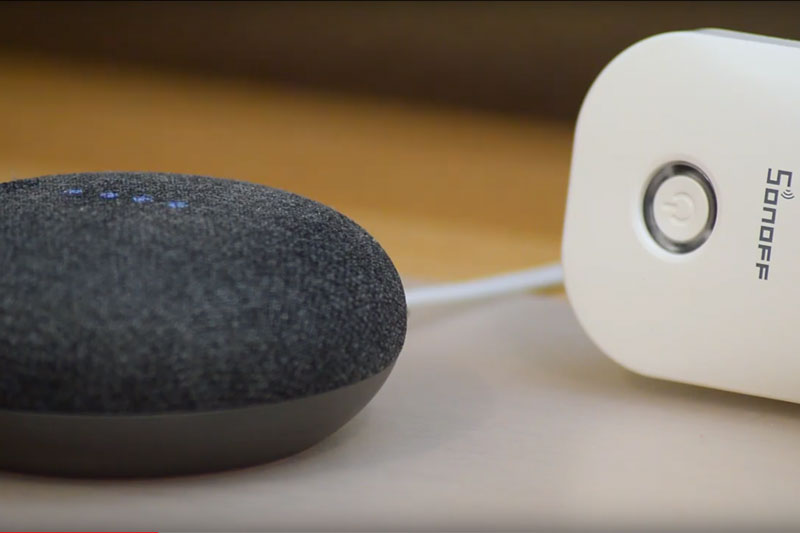In the near future of the Smart Home, you will be able to control anything with your voice. Assuming that everything supports the Smart Home standard you chose, that is. If you have a device that supports one of the other standards, you’ll end up uselessly yelling at it. Unless you use gBridge. As the name suggests, gBridge is a bridge between Google Assistant devices and the rest of the smart home universe. It’s an open source project that is available as a Docker image can be run on a low power device in the home, or on a hosted service.
Fundamentally, gBridge is a Google Assistant to MQTT translator. Message Queuing Telemetry Transport (MQTT) is the messaging protocol that many smart home devices use, as it runs over TCP and doesn’t take much power to implement. We’ve covered how to bash around in MQTT and do much of this yourself here, but gBridge looks to be somewhat easier to use. It’s just come out of beta test, and it looks like it might be a good way to get into Smart Home hacking.
There are, of course, plenty of other ways of doing this, such as IFFFT, but [Peter Kappelt], the brains behind gBridge, claims that it is more flexible, as it offers support for the whole Google Assistant vocabulary, so you can do things like put devices into groups or do more conditional control (such as if the light level in the hallway rises above a certain amount, start recording with a camera) with non-Google devices. [Peter] is also looking to run gBridge as a hosted service, where he does the behind the scenes stuff to update servers, etc, in return for a small fee.
















It’s worth noting that the official API that this wraps, “Actions on Google”, is fairly straightforward and well documented.
I guess maybe it’s because I’m old, but I don’t get the whole ‘Voice Control Everything!’ thing. The LAST thing I want in my house is everyone yelling at some object to get it to do what they want. I can control most of everything I have here with my phone, and nobodies bothering anyone else screaming across each other.
I won’t even get into the entire privacy thing, since we all know a lot of your conversations are going out on the cloud and into the hands of people who have already proven they don’t care about your privacy, and will lie when you catch them at it.
Nah, it’s not just you, I’m fairly young and I only use voice control when I need to be hands-free. I set up all my smart home stuff to be able to use my phone or PC to control things, and for automation. Voice control can be useful, but I don’t get the obsession behind it.
It’s about ease of use.
Assuming you’re going for smart lighting at all, consider the following for convenience:
1. Coming into a dark room, picking your phone out your pocket, unlocking it, finding the app to control the lights, finding the light you want, turning it on
2. Walking into the room and saying “lights on”
(Secret option 3 – pressing a switch on the wall)
Also, which one is easiest to explain to visitors who just want to turn your bathroom light on?
“Oh yeah right, hang on, let me just get my phone and turn the light on for you”
Remember, this stuff is supposed to make your life easier, not add on extra convoluted steps just to make a room light come on…
If Google/whoever listening to you is an issue, you’d best get rid of your smart phone…
I presume that Google still gets to listen in. What I am looking for is a local “offline” voice command system. I can perform image recognition locally so it should be easy to provide voice command capabilities with Amazon/Google like quality offline but it seems that is not the case.Any recommendations?
The closest is Mycroft. It does voice to action processing locally then, if you use their api’s, sends the command json to their server to turn it into actions. https://mycroft.ai/
A very similiar solution for Alexa – https://alexa-node-red.bm.hardill.me.uk/
I use ha-bridge which works great but is sometimes a pain in the ass… i’m going to check your solution
*IFTTT ;)
Here is a small how-to to use ESP8266 with gBridge
https://www.instructables.com/id/Control-ESP8266-From-Google-Home-Using-GBridgeio/
G-bridge is dead, Jim.
yup :(
It still surprises me how many people think being able to turn your device on/off from your phone somehow constitutes it being “Smart”.
No. That’s just a dumb remote. We have had those since the 1980s.
“We have had those since the 1980’s”.
The first wireless TV remote was in 1955 actually…..